A Gentle Guide to Hollyhock Varieties
There’s a tender magic in the way hollyhocks—Alcea rosea—rise, tall and proud, like quiet declarations of strength. These flowers have graced gardens for centuries, their towering stalks dotted with blossoms that feel like the petals of a whispered secret or the pages of a well-loved diary.
In my garden, hollyhocks are companions in the slow work of becoming: patient, resilient, and utterly graceful. They remind me that growth, especially feminine growth, is neither rushed nor linear—it’s a soft unfolding, a gentle insistence on light and space.
Let me walk you through some of the most beloved hollyhock varieties, each carrying its own story and soulful lesson.
Chater’s Double — The Layered Empress
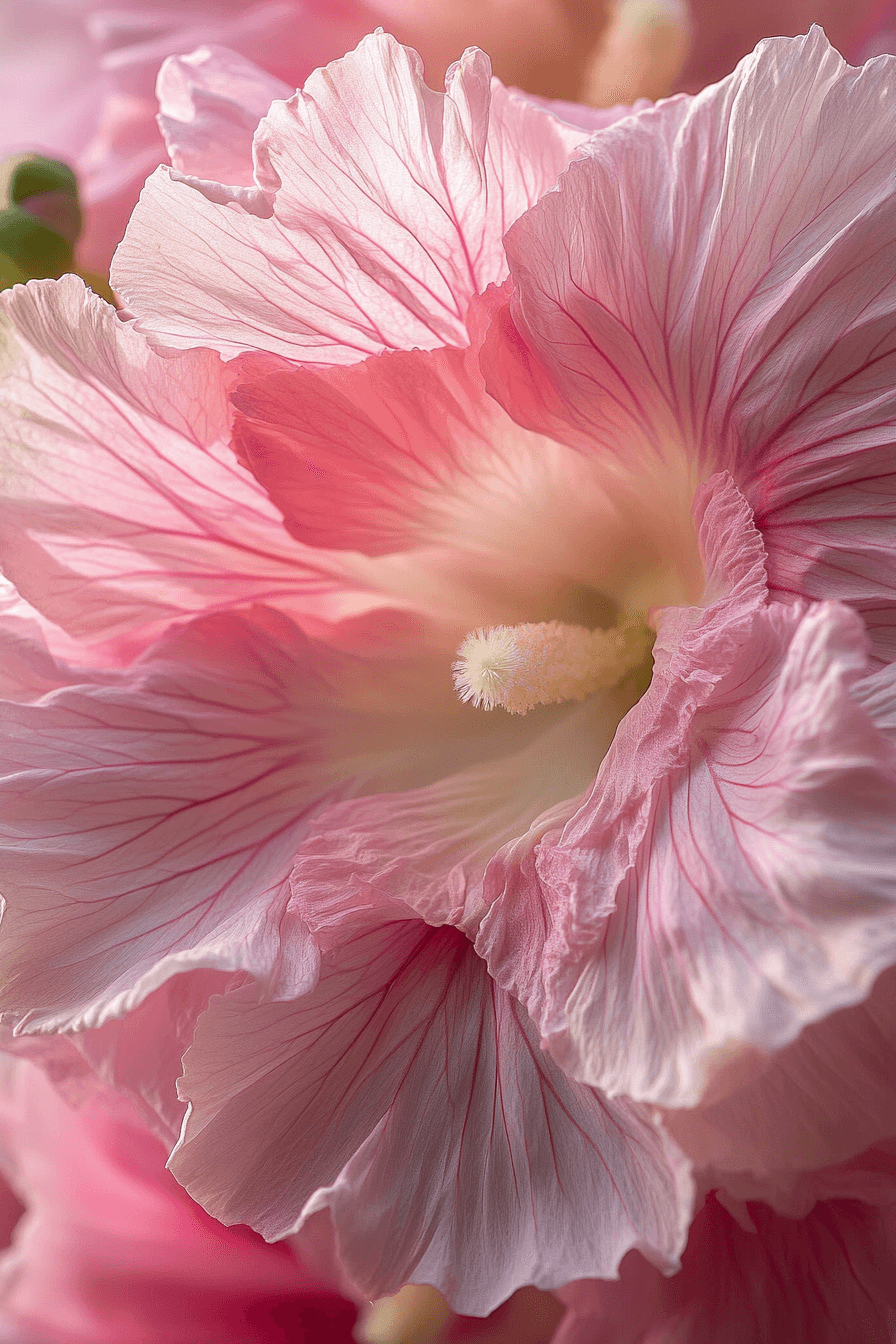
Imagine a flower as layered as the stories we carry within. Chater’s Double dazzles with its dense, ruffled petals in shades of blush, cream, and deep rose. It’s the garden’s own empress, teaching us about complexity, depth, and the beauty found in embracing all our layers—imperfections, strengths, and everything in between.
Care Tip: Provide full sun and rich, well-draining soil. Stake the tall stems early to prevent wind damage. Deadhead spent blooms to encourage longer flowering.
Blacknight — The Velvet Rebel
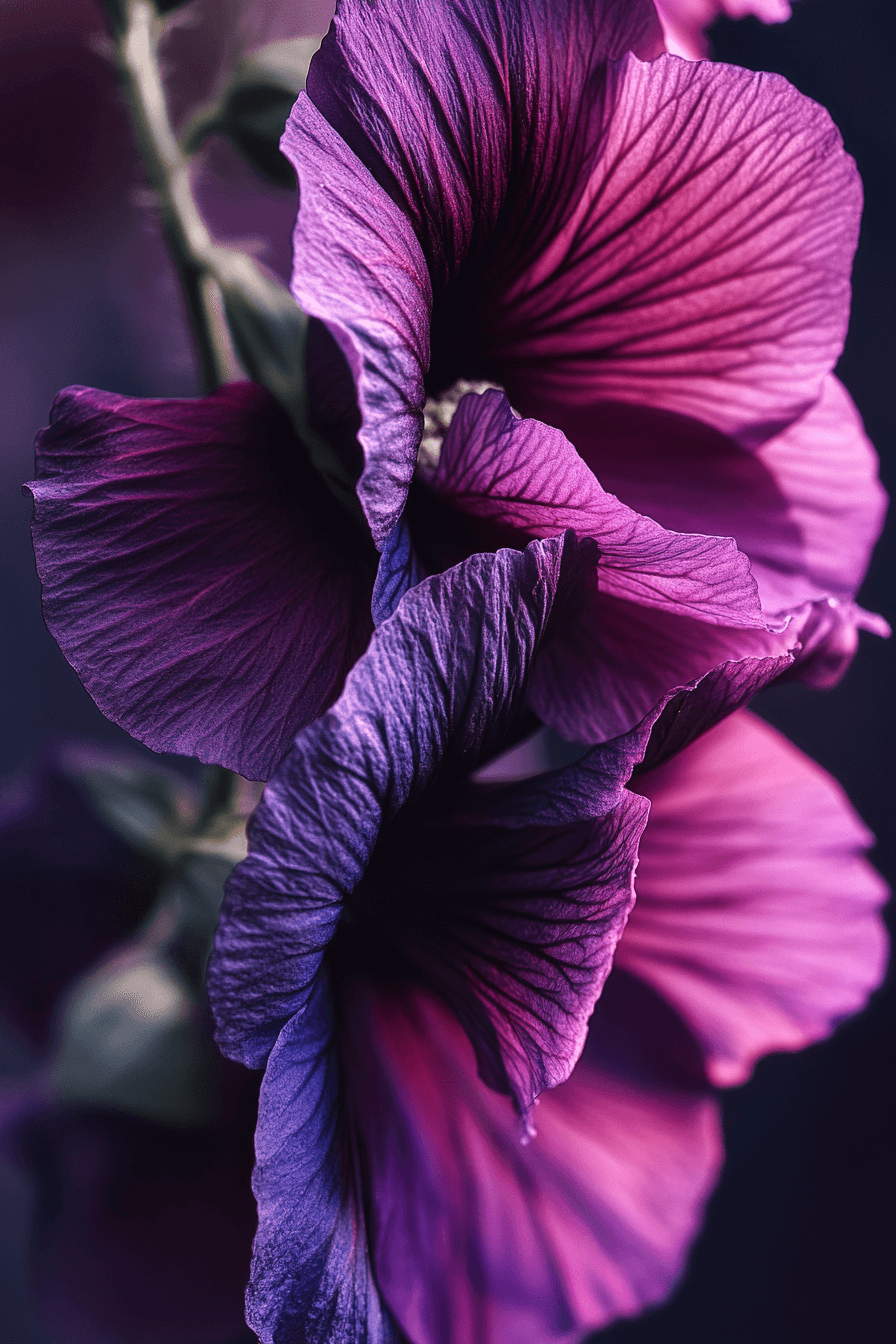
With petals as dark as a midnight sky, Blacknight hollyhocks embody mystery and boldness. Their deep purple almost absorbs light, a perfect metaphor for the fierce, shadowed parts of ourselves we often hesitate to reveal. Cultivating Blacknight is a reminder that embracing our shadows can be a powerful act of self-love.
Care Tip: Keep soil consistently moist but not waterlogged. Watch for rust disease; ensure good air circulation and remove affected leaves promptly.
Halo — The Gentle Beacon
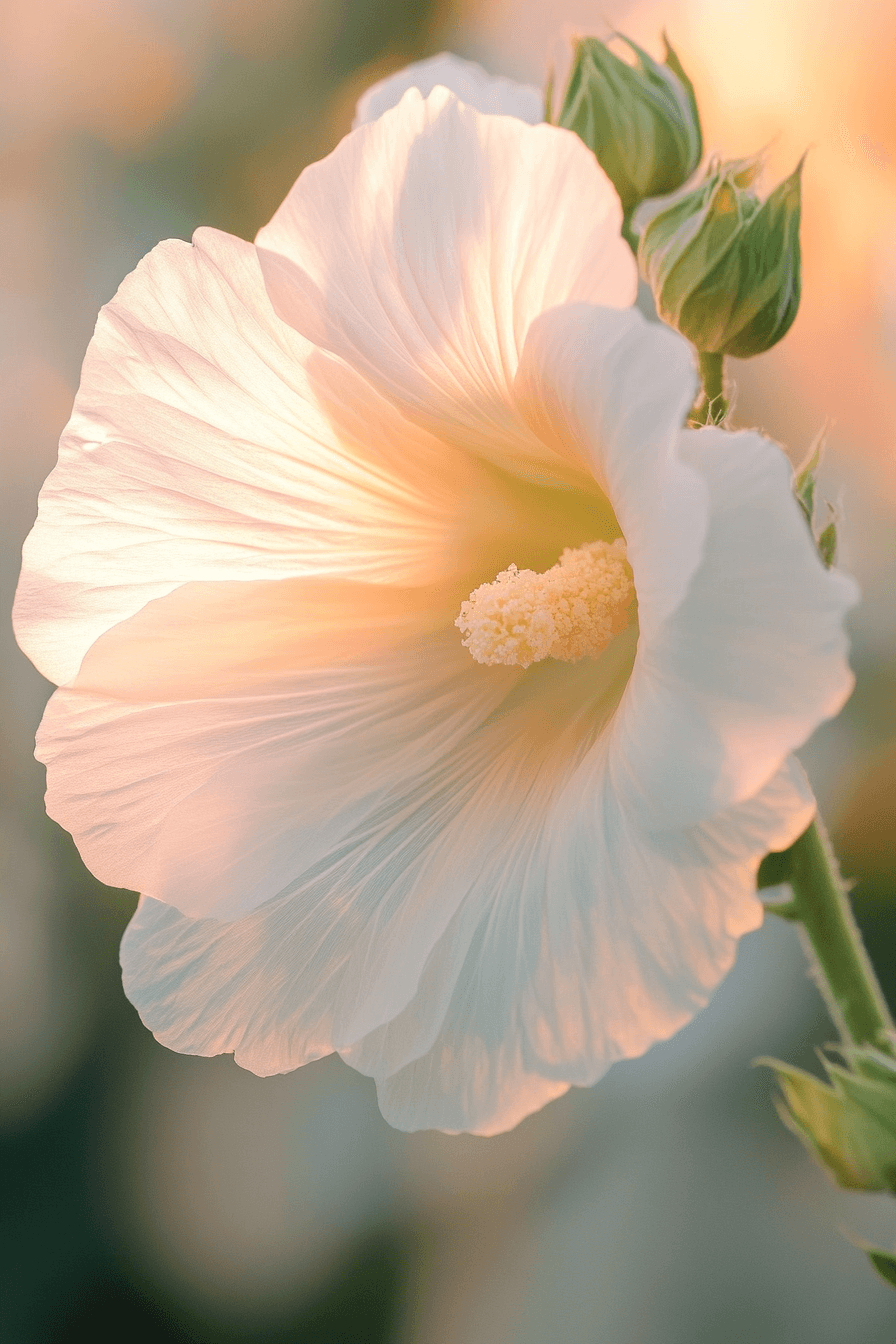
Soft white petals with a blush of pink at their heart, Halo feels like a whispered prayer or a moment of stillness in a chaotic day. This variety invites us to find strength in vulnerability and grace in gentleness—a gentle beacon lighting the way to healing and compassion.
Care Tip: Plant in a sheltered spot with full sun. Mulch in spring to retain moisture and protect roots through winter.
Nigra — The Elegant Outsider
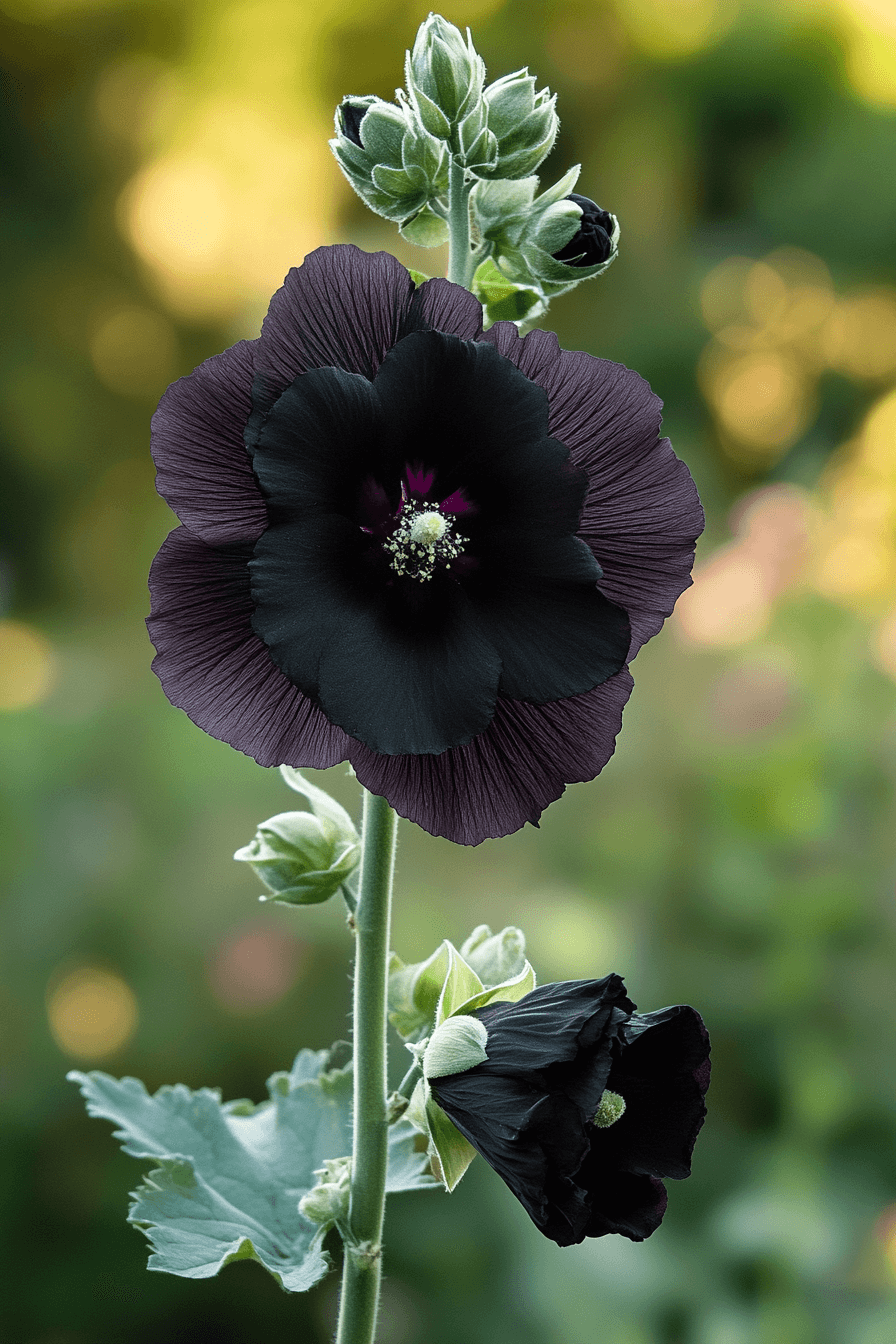
Nigra stands tall with rare black blossoms, a bold statement of individuality and courage. Its unique color challenges norms and invites us to celebrate our own singular beauty, to bloom on our own terms without apology.
Care Tip: Prefers well-drained soil and full sun. Stake tall plants and monitor for aphids, treating naturally if needed.
Creme de Cassis — The Warm Embrace
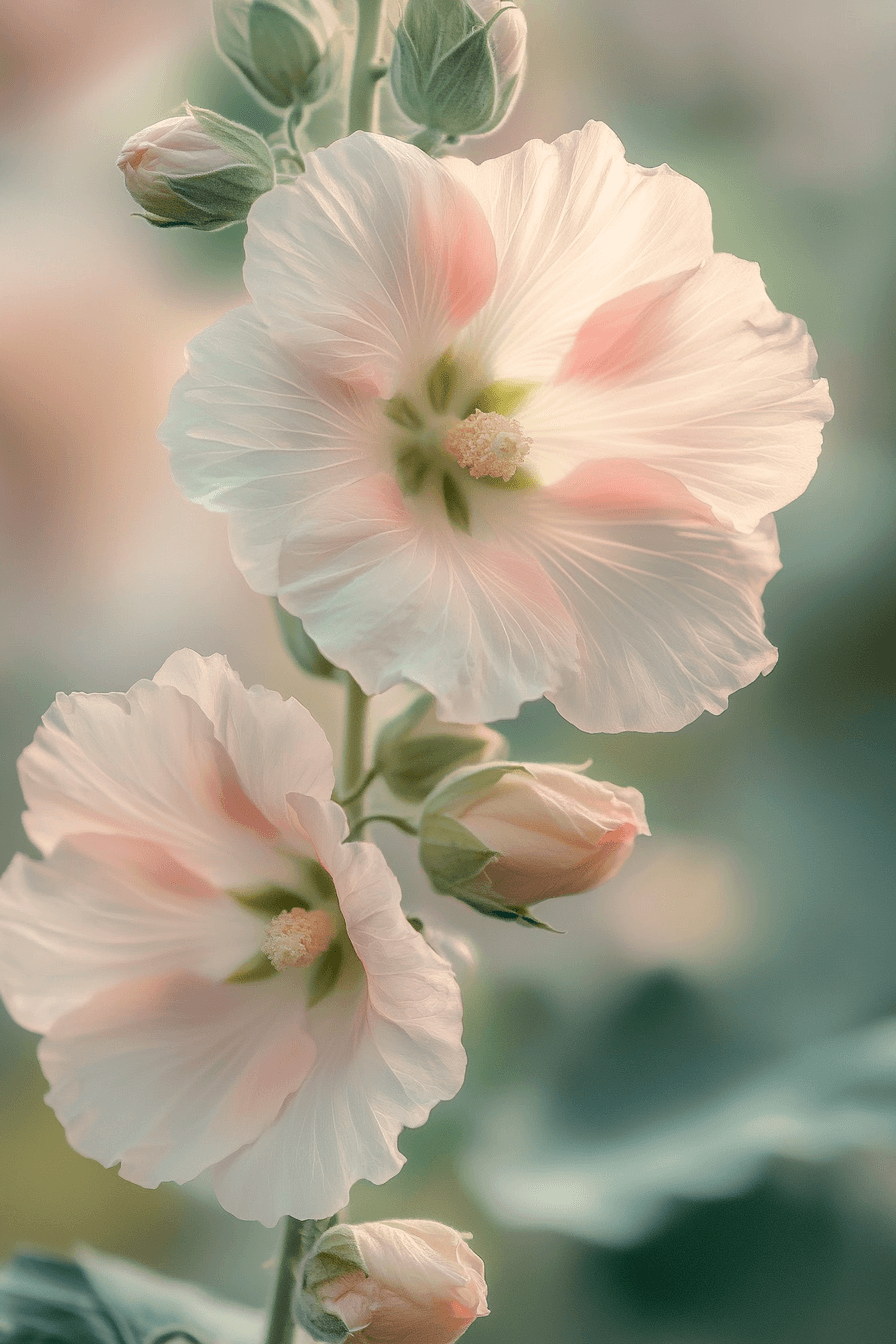
With creamy petals tinged with soft pink, Creme de Cassis feels like a comforting hug from an old friend. It reminds us that growth is nurtured best in community, warmth, and kindness—soft soils for soft hearts.
Care Tip: Water regularly during dry spells and add organic compost yearly. Prune to remove dead stems and encourage fresh growth.
Holiday Series — The Festival of Colors
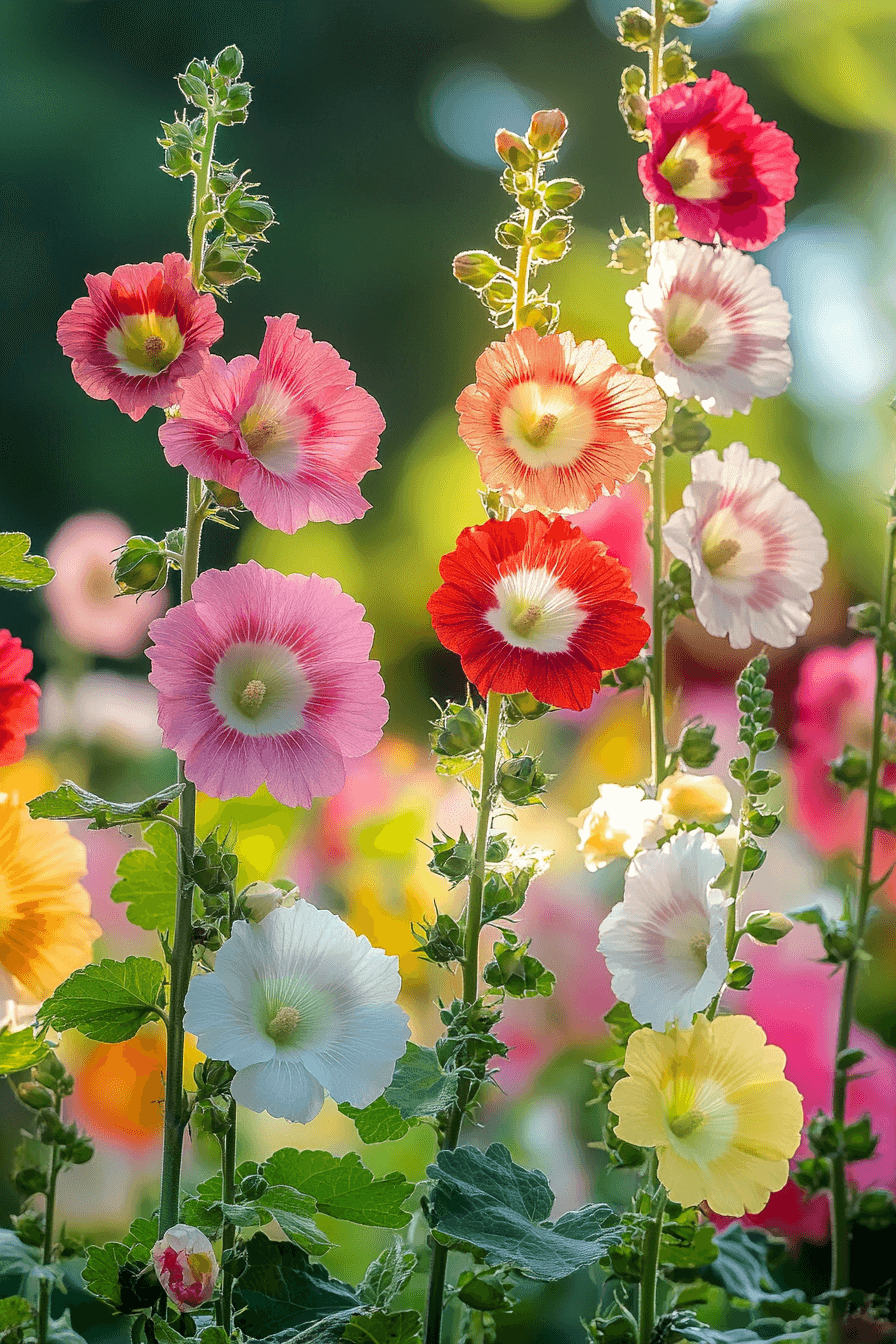
Bursting with joyful pinks, reds, yellows, and whites, the Holiday series celebrates the full spectrum of self-expression. These hollyhocks encourage us to live authentically, to paint our lives in vibrant colors, and to celebrate our unique stories.
Care Tip: Feed monthly with a balanced fertilizer during growing season. Mulch to retain moisture and prevent weeds around the base.
Growth, Healing, and Feminine Power
Tending hollyhocks is more than gardening; it’s a ritual of patience and gentle strength. These flowers grow in their own time, weathering sun and rain, rising tall without hurry. Like them, we learn that feminine power is not always loud or fast—it is steady, rooted, and deeply healing.
Every stem is a quiet act of resilience; every bloom, a soft victory.
Frequently Asked Questions (FAQ)
Q: What growing conditions do hollyhocks prefer?
A: Hollyhocks flourish in full sunlight and well-draining soil enriched with organic matter. They appreciate good airflow to prevent common fungal diseases such as rust.
Q: How tall do hollyhocks typically grow?
A: Most hollyhock varieties reach heights between 1.5 and 2 meters (5 to 6.5 feet), making them ideal for creating dramatic garden backdrops.
Q: Are hollyhocks annuals, biennials, or perennials?
A: Typically, hollyhocks are biennials or short-lived perennials. They bloom in their second year but self-seed readily, often appearing as perennials in the garden.
Q: How can I extend the flowering period of hollyhocks?
A: Deadheading spent flowers encourages continued blooming. Regular watering and mulching help keep plants healthy and vigorous throughout the season.
Q: Do hollyhocks have medicinal uses?
A: Historically, hollyhock roots and petals have been used in traditional remedies to soothe skin irritations and respiratory ailments, aligning with their nurturing symbolism.
I hope this gentle guide inspires you to welcome hollyhocks into your garden—and your heart—as allies in your own unfolding story of growth and grace.
With warmth and wild hope,
Jojo Len
“Bloom boldly. Root deeply. Rise gently.”
🌸 Keep Wandering Through the Garden
- A Gentle Guide to Lavender Varieties: Perfect Choices for Balcony, Aromatherapy & Garden Bliss
- Five Tender Sunflowers for Small Gardens & Big Feelings
- A Gentle Guide to 8 Classic Rose Varieties & Care Tips for Slow Living Gardeners
- A Gentle Guide to Cosmos: Three Varieties for Joyful, Wild Gardens
- Gentle Blossoms: A Zinnia Guide for Your Soulful Garden
- A Gentle Guide to Marigold Varieties
- A Gentle Guide to Petunia Varieties
- A Gentle Guide to Pansy Varieties: Faces of Resilience
- A Gentle Guide to Viola Varieties
- A Gentle Guide to Tulip Varieties
- A Gentle Guide to Lily Varieties
- A Gentle Guide to Chrysanthemum Varieties
- A Gentle Guide to Calendula Varieties
- A Gentle Guide to Nasturtium Varieties
- A Gentle Guide to Cornflower Varieties
👉 Explore more at jojolen.shop
- Pinterest: @GrowandGathertogether | Instagram: @jojolen6666
- Images © jojolen.shop — credit if shared. No commercial use without permission.
